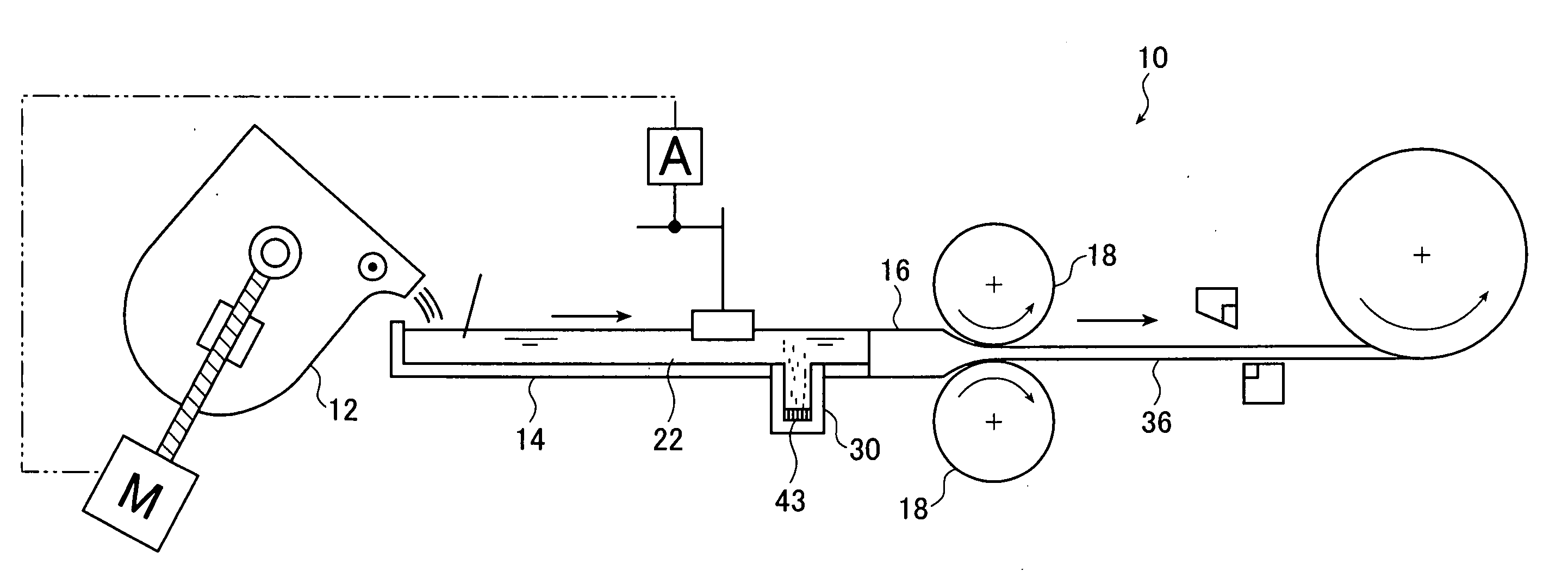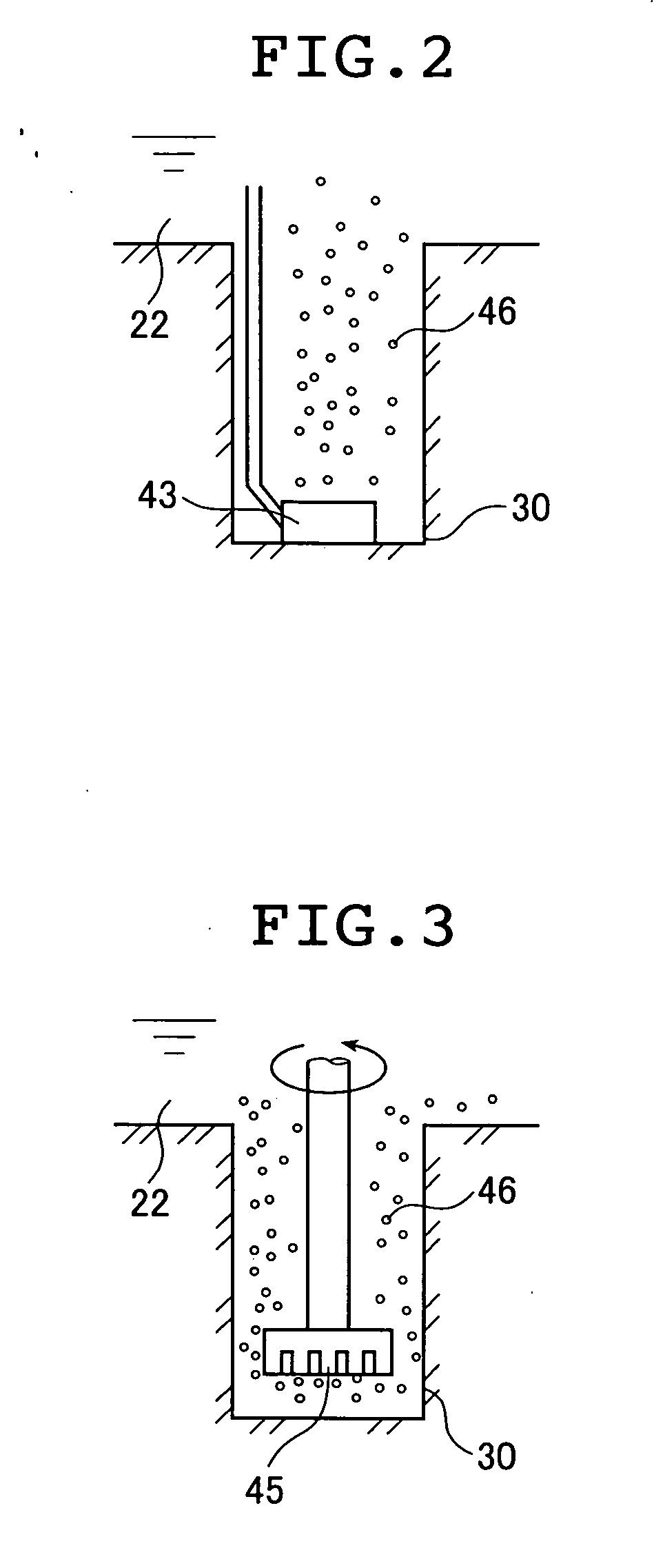Lithographic printing plate support, method of manufacturing the same, and presensitized plate
- Summary
- Abstract
- Description
- Claims
- Application Information
AI Technical Summary
Benefits of technology
Problems solved by technology
Method used
Image
Examples
examples
[0324] Hereinafter, the present invention is described in detail by way of examples. However, the present invention is not limited thereto.
Examples and Comparative Examples of First to Tenth Aspects of Invention
1-1. Preparation of Aluminum Melt
[0325] Aluminum Melts 1 to 7 containing various ingredients in the amounts shown in Table 1, with the balance being aluminum and inadvertent impurities, were prepared.
TABLE 1SiCuTiBMgMnZnAl meltFe (wt %)(wt %)(wt %)(wt %)(wt %)(wt %)(wt %)(wt %)10.060.030.0010.0050.0010.0010.0010.00120.280.050.0020.0100.0020.0010.0010.00130.280.080.0150.0100.0020.0010.0010.00140.280.080.0250.0100.0020.0010.0010.00150.280.080.0350.0100.0020.0010.0010.00160.280.080.0010.0050.0010.2500.0010.00170.280.200.0030.0300.0060.2500.9000.050
1-2. Manufacture of Lithographic Printing Plate Support
examples 57 and 58
, and Comparative Examples 21 to 24
[0489] Cleaning treatment was carried out on the aluminum melts obtained as described above, following which, as shown in Table 8, the respective melts were consecutively subjected to a filtration step, a continuous casting step, a cold rolling step, an intermediate annealing step, a finish cold rolling step, a graining treatment step and an anodizing treatment step by the methods described below, thereby obtaining lithographic printing plate supports.
(1) Filtration Step:
[0490] The aluminum melt was filtered using a filtration tank. The filter used in the filtration tank was a ceramic filter. A filtration step was not carried out in Comparative Examples 22 and 24.
(2) Continuous Casting Step:
[0491] Aluminum alloy plates were continuously cast using the machine shown in FIG. 1. Casting was continued without interruption by feeding additional aluminum melt from a melting furnace (not shown) just before the melt in the holding furnace ran out. Mo...
examples 59 and 60
, and Comparative Examples 25 and 26
[0509] Cleaning treatment was carried out on the aluminum melts obtained as described above, following which, as shown in Table 9, the respective melts were consecutively subjected to a continuous casting step, a cold rolling step, an intermediate annealing step, a finish cold rolling step, a graining treatment step and an anodizing treatment step by the methods described below, thereby obtaining lithographic printing plate supports. A filtration step was not carried out prior to the continuous casting step.
(1) Continuous Casting Step:
[0510] Aluminum alloy plates were continuously cast using the machine shown in FIG. 1. More specifically, first, in a melt feeding step, the aluminum melt was fed from a melting furnace to a melt feed nozzle. Agitation was not carried out at this time. Next, in a casting step, the aluminum melt was fed between a pair of cooling rollers from the melt feel nozzle, then was rolled while being solidified by the pair o...
PUM
| Property | Measurement | Unit |
|---|---|---|
| Length | aaaaa | aaaaa |
| Length | aaaaa | aaaaa |
| Length | aaaaa | aaaaa |
Abstract
Description
Claims
Application Information
 Login to View More
Login to View More - R&D
- Intellectual Property
- Life Sciences
- Materials
- Tech Scout
- Unparalleled Data Quality
- Higher Quality Content
- 60% Fewer Hallucinations
Browse by: Latest US Patents, China's latest patents, Technical Efficacy Thesaurus, Application Domain, Technology Topic, Popular Technical Reports.
© 2025 PatSnap. All rights reserved.Legal|Privacy policy|Modern Slavery Act Transparency Statement|Sitemap|About US| Contact US: help@patsnap.com



